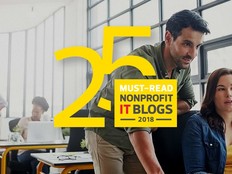Venmo & Cash App for Churches: Digital Giving Blooms
Dropping a check or a few dollars in the collection plate has long been a practice at most houses of worship.
But digital platforms have fast become a common alternative for many parishioners. About 80 percent of Christians polled for State of the Plate, a comprehensive survey of giving practices, say their church offers the option to give through a website — up significantly from 29 percent five years earlier.
The survey, conducted in 2016, also found that 46 percent use mobile app or text-based options to donate (up from just 4 percent in 2010). And nearly one-third of respondents give via a tablet or kiosk in the lobby.
Brian Kluth, founder of Christian research firm Maximum Generosity and the State of the Plate survey, says such tools are vital, particularly for young worshippers accustomed to one-click mobile payments.
“Millennials are not check-carrying, they’re not cash-carrying,” Kluth told Money magazine earlier this month. “If churches aren’t creating digital opportunities, millennials won’t give.”
That’s why a number of apps and software have moved in to fill the void — a welcome development as churches report declining donations in recent years.
Still, integrating the technology requires planning and promotion. Here’s how to get started:
SIGN UP: Get more news from the BizTech newsletter in your inbox every two weeks!
Start with a Single Digital Giving Method
Your church’s fundraising needs and culture can help dictate the best options. Based on a congregation’s size and demographics, consider launching a single method (an iPad kiosk, for example) first to gauge participation and results.
Pastors with a more casual worship service may opt to remind parishioners about the church’s mobile giving options during Sunday tithing to target those who forgot their checkbooks in real time. Nobody leaves home without their smartphones, after all.
Promote Digital Giving Early and Often
Faith leaders should take every opportunity to endorse the new tech tools to their flock, say the makers of Qgiv, a customizable online fundraising platform for nonprofit organizations. That means prominent mentions during worship services, reminders via social media and notifications in the church newsletter or bulletin.
Some churches may opt for “text-to-give” platforms such as Elexio that offer even more immediacy. Here, users don’t have to download an app or create an account, and various keywords can be deployed to direct gifts toward different causes.
Emphasize the Ease of Digital Giving
Amazon, Cash App and Venmo have made one-click commerce second nature. That’s key for young people, which the State of the Plate survey found give to their church less frequently than older generations. Mobile apps can make giving to your house of worship as easy as paying a friend back for dinner.
Such functionality has benefits beyond weekly service. In a survey of more than 2,000 of its clients, the church-giving app tithe.ly found that two-thirds of donations occur on days other than Sunday.
That survey also found long-term benefit: 13 percent of title.ly donations are set up as autopay to be recurring gifts.
Be Transparent About Fees Associated with Digital Giving
Most tools claim a modest fee for their services — typically between 1 and 3 percent per transaction, often coupled with a 30-cent surcharge. That’s no different than most mobile-payment services.
Still, that factor does not appear to be a deterrent: echurch, which offers mobile giving and custom church apps, reports that more than half of its customers see a 75 percent increase in recurring gifts in the first year of offering a digital option.
Using a digital platform also provides peace of mind for parishioners that miss the physical act of handing over money. Echurch, for example, allows churches to share its data seamlessly with a number of cloud-based tools, including Intuit QuickBooks, to track and distribute donations.









